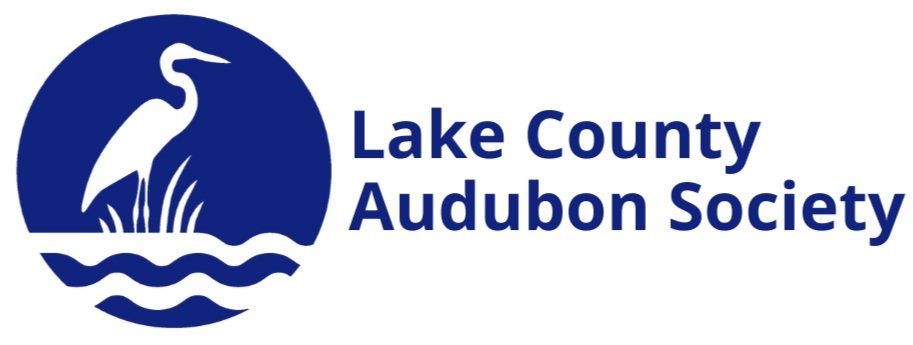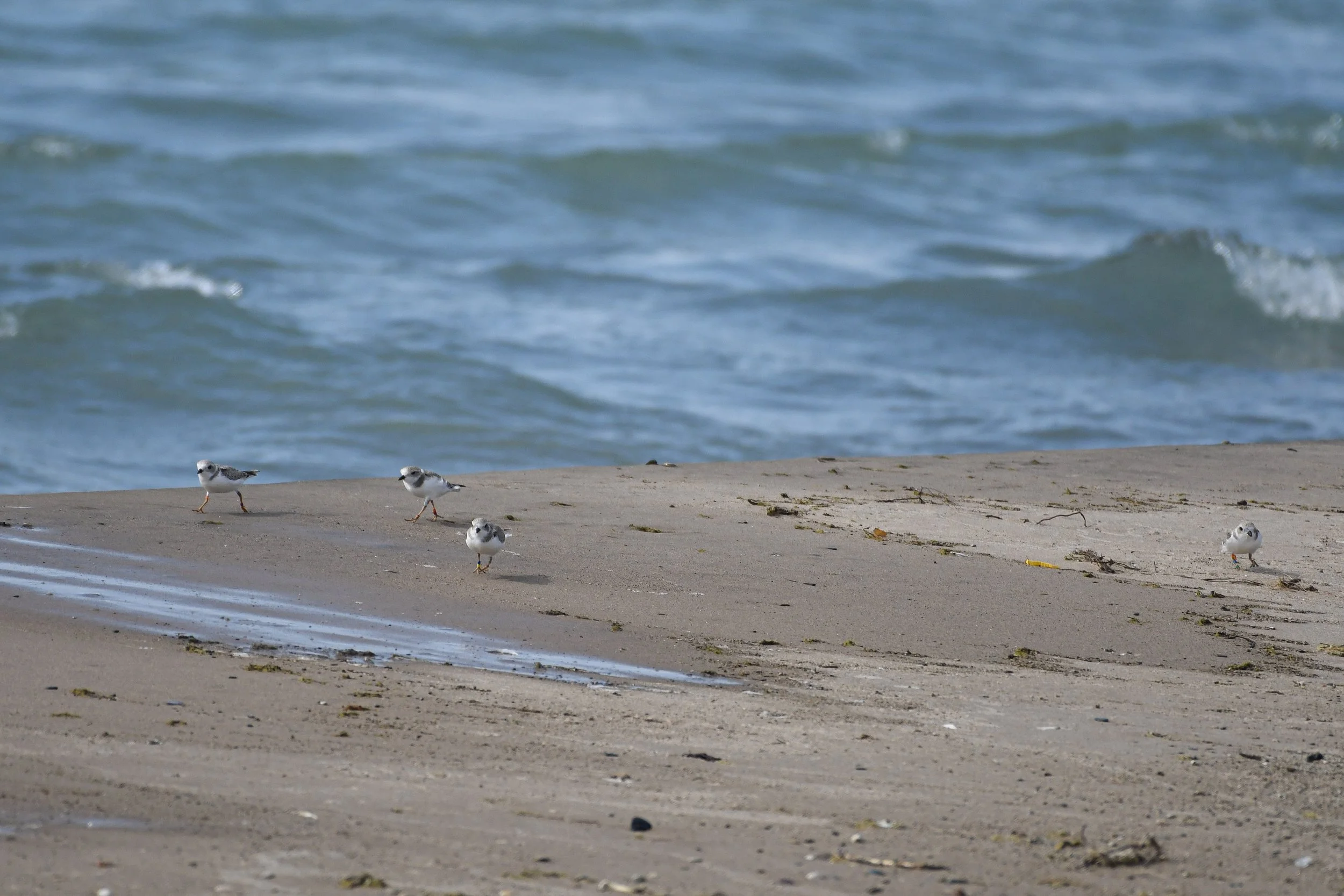
News
by Carolyn Lueck, LCAS board member
In December, 2024, board member and Piping Plover monitor visited Fort Meyers, Florida to check in on Pepper. This is Pepper’s second winter in Florida and volunteers with the Sanibel-Capitva Preservation Foundation (SCCF) and Florida Banded Birds Resighting keep us updated during the nine months he’s on their beaches.
Our Sharing Our Shore-Waukegan program strives to make CONNECTIONS - locally and regionally - as we work to monitor and protect the piping plovers and their habitat and share their story.
Enjoy this travel adventure blog Carolyn put together for Lake County Audubon!
Many of our Lake County Audubon board members listened to the NPR 1A podcast ‘Birding to Help Revitalize Conservation Efforts’ today.
Host Jen White brought together a panel to discuss the recently release 2025 State of Birds. The report is a status assessment of the health of the nation’s bird populations, delivered to the American people by scientists from U.S. bird conservation groups. (See the report by clicking HERE).
The data contained in the report is alarming and indicates losses in bird populations are continuing at an accelerating pace for many species. The guests on the show discuss the results of the report but also highlight conservation work that is reversing the decline in some species. They also discuss how data contributed by birders through technology (ie. eBird, iNaturalist) is helping researchers, providing information previously unattainable.
We urge our members to spend 30 minutes listening to this podcast.
CLICK HERE for a link to the NPR 1A podcast.
by Matthew Hutson
reprinted with permission, The New Yorker
A while ago, I searched for a beard trimmer in my bedroom. I spent probably forty-five minutes looking in every likely location at least twice, and every unlikely location at least once. I swore up a storm; the trimmer never turned up. I’ve played similar games with pants. There’s a reason for the burgeoning market in electronic tags that track your belongings.
Our poor memories can seem mystifying, especially when you consider animals. This time of year, many species collect and cache food to stave off winter starvation, sometimes from pilfering competitors. So-called larder hoarders typically keep their troves in a single location: last year, a California exterminator found seven hundred pounds of acorns in a client’s wall deposited there by woodpeckers. In contrast, scatter hoarders—including some chickadees, jays, tits, titmice, nuthatches, and nutcrackers—distribute what they gather over a wide area. Grey squirrels use smell to help them find their buried acorns. But many scatter hoarders rely largely on spatial memory.
by Matt Hayner, LCAS board member
While the Empidonax Flycatchers (Acadian, Alder, Least, Willow, and Yellow-bellied Flycatchers) of Northern Illinois may be visually indistinct and difficult to characterize by sight alone, our summer-resident Eastern Kingbirds possess one of the most distinctive markings amongst North American birds: the white terminal band on their tails. However, it turns out this is not the only high-contrast characteristic of the species.
Eastern Kingbirds are known scientifically as Tyrannus Tyrannus (family, species), and the redundancy of the name is indicative of the birds’ behavior. From Cornell’s birdsoftheworld.org:
by Matt Hayner, LCAS board member
We’re now past the steep part of the spring migration in Lake County: April and May were filled with the visual delights of charismatic warblers, diverse water birds, and iridescent hummingbirds. However, perhaps underappreciated is the auditory richness of bird calls and songs that also fill the air during (and after) a migration.
Kenn Kaufman, field editor for Audubon magazine, says, “Birds, like other creatures, must be able to recognize their own kind, at least during breeding season. While some other animals may identify potential mates by smell or other chemical cues, birds generally rely on sight and sound.” For people, learning to listen to birds and
While annual cicadas are commonly heard singing in Lake County every year, there is a population of periodical cicadas that only emerges here every 17 years. This massive emergence is expected in May and June of this year (the last periodical emergence occurred in 2007). Millions of cicadas will tunnel out of the soil, crawl up trees, sing, mate, lay eggs, hatch into nymphs, and complete their life cycle returning to the soil under trees where they live on tree sap until their next emergence in 17 years. The periodical cicada population in northern Illinois is known as Brood XIII.
Winter in NE Illinois finds many of us lingering in a comfy chair, cup of hot coffee warming our hands as we bird watch through the recently cleaned glass of a sunny, or not so sunny window. We don’t want to think about the fine feather dust wing imprint that the Mourning Dove left as it crashed into the window and died on our patio. Odds are you cleaned many bits of feather and dander off your windows as winter approached just to realize the windows are ‘dirty’ again.
We wax on about the devastation that cats inflict on our beloved bird population, but the imprint of a bird wing on a window, evidence of a collision and the resulting bird death seems unavoidable. Birds fly into windows. People need windows. Sad….but avoidable.
LCAS member Wanda Supanich has researched options for window treatments to prevent bird collisions on residential buildings. Use the button below to read more about her experiences with various products. She will be at the March program meeting with samples from manufacturers and available for questions.
In 2024, Lake County Audubon Society is sponsoring a new program to get folks out to see their local birding hotspots. Bird Lake County will feature a Lake County location each month for you to either bird on your own or with us on a group walk.
It’s the time of year again for the next Open Space Celebration, hosted by the Green Corridor Coalition.
Join us on Sunday, Oct. 15, 2023, as we celebrate beautiful Lake County’s protected Open Space.
A recent newsletter from our friends at Environment for the Americas included these great tips on celebrating a bird and wildlife-safe Halloween!
Lake County Audubon Society’s Sharing Our Shore-Waukegan (SOS-W) program partnered with the U.S. Fish and Wildlife Service and the Illinois Department of Natural Resources to ensure the survival of four Piping Plover chicks released at Illinois Beach State Park. SOS-W volunteers have been monitoring the beach since their release.
Spring is here! Which means spring migration! As always, we will be hosting a series of bird and nature outings.
All are welcome! You do not have to be an experienced birder or LCAS member to attend.
Lake County residents have a chance to increase biodiversity and wildlife habitat by supporting efforts to transform the now-defunct Route 53 extension into a state park.
The contest was designed to familiarize people with the green corridor that was once targeted for the construction of the proposed Route 53 Extension by the Illinois Tollway.




















There has been a decline of 3 billion birds in North America since 1970 – a 30% decrease. The front lines of conservation for birds are found where people live – our own backyards. There are several ways you can help birds thrive in Lake County, most importantly by providing habitat for bugs and birds at home. The greatest habitat benefits are provided by landscaping your yard with locally native plants that provide a variety of food for birds year-round covering breeding, nesting, migrating and winter seasons. Plant leaves, fruits, nuts, seeds, and nectar are food for birds - and for the bugs that are food for birds. Shrubs and trees are especially important sources for nests and shelter as well as food.